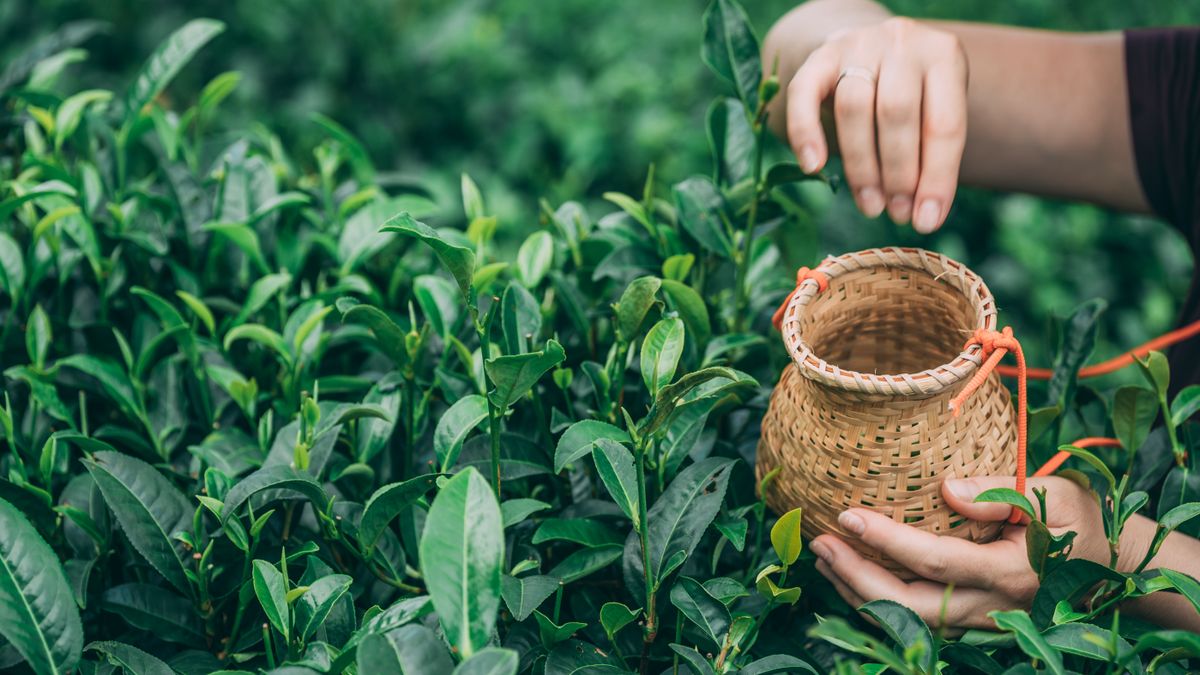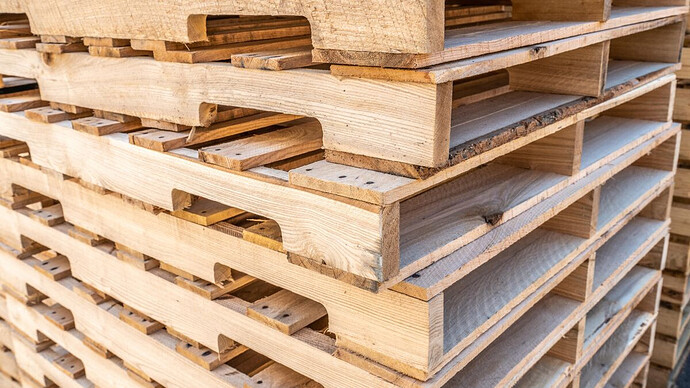Suppliers of wood and plastic pallets both heavily promote their respective sustainability attributes, raising the question whether only one can claim top honors.
Pallets are ubitiquous in supply chains. An estimated 2 billion pallets are in use daily in the United States, with 93% of goods worldwide transported in the form of a palletized load according to Virginia Tech’s Center for Packaging and Load Design.
Peerless Research Group’s 2022 Pallet Market Evaluation, its 12th annual study, showed that 95% of responding companies use wood pallets and about one-third use plastic. Of the companies that plan to increase their plastic pallet usage in the next year, 20% view that substrate as more sustainable than wood.


TRENDLINE
What the future of inventory management looks like
“This whole ESG thing, the corporate responsibility, has kind of exploded,” Judd Michael, professor of agricultural and biological engineering at Penn State told Packaging Dive. “My feeling is the big pallet users of the world — from the OEMs that ship the product on pallets all the way down to the retailers — have gotten so much pressure to be more environmentally friendly.” That trend has gotten pushed upstream to the pallet suppliers, Michael added.
More pallet companies are marketing their products’ sustainability, regardless of substrate, in alignment with the increased attention to ESG practices. Despite the natural inclination to declare one material superior, the wood vs. plastic pallet debate has “raged” for well over a decade. As with other packaging sectors, the pallet industry eventually might conclude that there’s room, and need, for multiple solutions.
Seeing the forest for the trees
The National Wooden Pallet and Container Association welcomes the enhanced focus on environmental consciousness because it has data to back up the claims, according to Vice President of Science and Technology Brad Gething.
NWPCA developed an Environmental Product Declaration for wood pallets, third-party verified by UL, that serves as a disclosure of the product’s impacts based on a full life-cycle assessment. The association also points to a study it conducted in partnership with Virginia Tech’s Center for Packaging and Unit Load Design showing that 95% of wood pallets are recycled. And while most end-of-life efforts are to avoid landfilling, wood pallet material is also biodegradable.
“Recycling” is a catch-all term in the wood pallet world that encompasses reuse and repurposing, according to NWPCA sources.
Keep up with the story. Subscribe to the Supply Chain Dive free daily newsletter
“The inherent value in the wood pallet has really led to a robust collection, repair and reuse side of the industry,” said Jason Ortega, vice president of public affairs at NWPCA. “Pallets are really not just used once; that’s extremely, extremely rare.”
After their first use, wood pallets are inspected and repaired if necessary for reuse, or sometimes they are cut up and portions are reused in other pallets, he said. Those that can’t be repaired or repurposed into new pallets “can become animal bedding, mulch, biofuel, wood pellets — which helps with our overall sustainability story as an offset for petroleum-based energy,” Ortega said.
The overall embodied carbon from a wood pallet is relatively low, according to Gething: “The potential is there for the offsets to be greater than the embodied carbon to manufacture a pallet.”
The simplicity of the materials — wood and nails — and of the manufacturing process is another sustainability opportunity, because “the more complicated the manufacturing process, typically the more complicated the environmental impact,” Gething said. In addition, pallet manufacturers are “doing a lot more with automated machinery” and increasing their production energy efficiency, further reducing the carbon footprint, Ortega said.
Proof in the plastic?
Plastic pallets also typically are reused or recycled at the end of their usable life.
The durable, moisture-resistant plastic materials can withstand many more use cycles than wood, according to a study by Virginia Tech examining pallet supplier Orbis Corporation’s products. The study concluded that one of its reusable plastic pallets successfully completed 280 use cycles compared with 11 for wooden pallets.
Read More in Procurement
 May 26, 2023
May 26, 2023
Nike CFO takes on procurement oversight
 May 25, 2023
May 25, 2023
Walmart works with some suppliers to lower prices
 May 25, 2023
May 25, 2023
Chanel buys partial stake in cashmere and natural fibers supplier
 May 24, 2023
May 24, 2023
Apple strikes multibillion-dollar deal with Broadcom for US-made 5G tech
 May 23, 2023
May 23, 2023
Chipotle prepares national rollout of RFID for food traceability
 May 22, 2023
May 22, 2023
Major tea companies linked to human rights abuses, report says
 May 22, 2023
May 22, 2023
It’s not easy buying green: How procurement can drive ESG in supply chain
 May 18, 2023
May 18, 2023
TJX looks to capitalize on an ‘outstanding buying environment’
Want to see more stories in Procurement?
Read More ➔
“That extended life cycle that you get with plastic definitely helps in the long term,” said James Riegleman, product manager at Orbis. “Then at the end of its life, when that plastic pallet is broken or no longer can survive, we’ll take it back … and turn it into more packaging products in the future.”
A stack of Orbis’ plastic pallets.
Permission granted by Orbis Corporation
Through its buyback program, Orbis purchases used plastic pallets from customers and grinds them down. The material becomes plastic flake, which is made into new products including pallets and bulk bins.
Increasingly, recycled material is incorporated into plastic pallets, which ups their sustainability. For example, recent studies show that pallets are a viable end market for plastic film collected curbside.
Orbis’s pallets primarily are made from polypropylene or high density polyethylene, including plastics recovered from coastal environments via its Ocean in Mind initiative.
“Consumers are driving the purchases, and they want the companies that they’re buying from to be a sustainable company,” Riegleman said. “We understand that and are really designing these new products around the recycled content and still achieving that performance. It is definitely a focus.”
Difficult decisions
Penn State’s Michael has worked with Chuck Ray, associate professor of ecosystem science and management, on pallet research studies. A 2020 study on which Ray was the primary author examined the life-cycle assessments of treated wood and plastic pallets used by the grocery industry, noting environmental impacts from emissions and resources consumed.


TRENDLINE
The latest advances in warehouse automation
“It did not occur to me to do this research until the plastic pallet industry started talking about their products as environmentally superior,” Ray said in a news release. “I questioned that statement and decided to do life-cycle analyses.”
The researchers looked at nine impact categories, including non-renewable energy use, ozone layer depletion, aquatic ecotoxicity and terrestrial ecotoxicity.
“The number of trips that a pallet takes is very critical for trying to calculate life-cycle assessment and compare two different kinds of pallets,” Michael said. “Another key variable when you’re thinking about the environmental footprint or the carbon footprint of any packaging like this is what happens at the end of life.”
The study concluded that wood pallets had a slight edge on plastic in terms of sustainability, namely the overall carbon footprint.
A sticking point for manufacturing new plastic pallets is the use of virgin resins derived from petroleum. And one of the major pushbacks on wooden pallets is the issue of deforestation, but that claim is inflated, Michael said.
“One of the beauties of wood pallets is they normally use the byproduct or the cheaper lumber that would come from a tree, and the best parts of the tree go to make something of much higher value — like lumber for a house or for cabinets or furniture,” he said.
Michael cautions that obtaining accurate and current data on pallet use and sustainability is challenging, and it’s important to understand who is commissioning or funding each study. Penn State’s studies, for example, are independent of the pallet industry.
Although some data might have changed slightly in the three years since the study was released, “the [pallet supply chain] system, like just about everything else, has gotten more efficient over the last 10 years,” Michael said, adding that companies along the supply chain have become much better at repairing and reusing pallets and the number of use cycles has increased.
Ultimately, “it’s not really about the pallet, it’s about the system,” he said.



